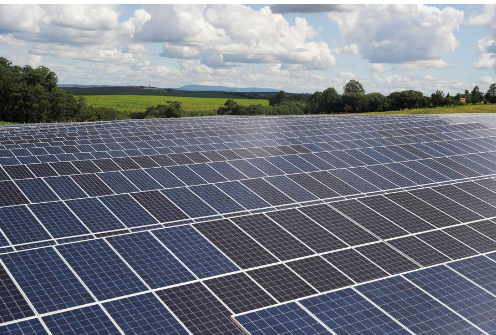
Source: Pulse
The Electricity Coordinator’s projection assumes that the plan to install 2,450 MW of solar, plus another 1,540 MW of wind power, will be met. Thus, the sum of these energy sources, hydro NCRE, geothermal and others, will exceed the contribution of coal.
Coal as a source of electricity generation in Chile has an expiration date. And while that is coming, it is renewable energies that are taking over.
So much so that, as of this year, it is expected that the contribution of non-conventional renewable sources – i.e. wind, solar, geothermal, hydro NCRE and bio NCRE – exceeds that of coal.Despite the retirement of several units due to the decarbonization plan, it maintains a contribution of more than 30% of the matrix.
This, according to data from the Electricity Coordinator, the body in charge of dispatching power plants and, as its name implies, coordinating the operation of the system. According to the 2021 projection of this organization, the contribution of the aforementioned units, grouped as NCRE, will reach 35.5% of the system, compared to coal, which will contribute 31.6%.
This is provided that the commitments to install almost 4,000 MW of new wind and solar units announced for this year, of which 2,450 MW are solar and 1,540 MW are wind, are met.
By technology, solar generation -mainly photovoltaic, but also solar thermal, of which one plant has already been inaugurated in the country, the first of its kind in South America- will be the largest contributor among NCRE, reaching a 17.7% share in the system, with an expected annual generation of 13,880 GWh. This places it in third place as an individual source of electricity production, below the aforementioned coal and also conventional hydroelectricity, which, although considered renewable energy, is not recognized in Chile as NCRE.
The contribution of these conventional hydroelectric plants, which include larger reservoirs such as Ralco, Pangue or Angostura, will reach 24.4% of the system’s total this year.
It is followed by wind production, which will account for 11% of total electricity generation this year, with 8,670 GWh expected, in fourth place and surpassing natural gas, which will account for 7.2%.
These important changes are mainly explained by the increased competitiveness of renewable sources in relation to their competitors. In fact, the country’s main power generators such as Colbún, Enel, AES Andes or Engie have focused on developing new wind and solar initiatives and, with the exception of Alto Maipo, in its last phase of construction, no new conventional initiatives such as gas, coal or large hydroelectric plants are on the horizon.
New capacity
This increased NCRE contribution is supported by the entry of new power plants. According to the April report from the consulting firm SystepIn the next 12 months, 5,939 MW of new capacity is expected to come on line, of which 3,027 MW are solar, 1,779 MW are wind, 28 MW are geothermal, 563 MW are hydro and 541 MW are thermal. On the other hand, the retirement of AES Andes’ Ventanas II -that is AES Gener- is considered for July 2021, equivalent to 193.5 MW.
In fact, as of March 2021, there were a total of 142 NCRE projects declared under construction, with operations to start in February 2023. In addition, in that month, the Environmental Evaluation Service began processing 47 new initiatives, equivalent to 2,903 MW in addition to those declared under construction, with an associated investment of 4,395.8 MW. In addition, the RCA was granted to initiatives totaling another 785 MW, equivalent to 829.7 MW.
“We think it is very positive that the penetration of Non-Conventional Renewable Energies (NCRE) is turning out to be sustainably higher than the objectives set out in the discussion of the law. At that time, the goal was 20% by 2025 and particularly 13.5% by 2021. This undoubtedly confirms that the goal of decarbonization by 2040 can be achieved, considering that more than 90% of the new generation projects submitted to the Environmental Evaluation Service correspond to photovoltaic and wind projects, and a total NCRE generation of 22.2% in 2020,” says Pablo Demarco, commercial manager of Plataforma Energía.





